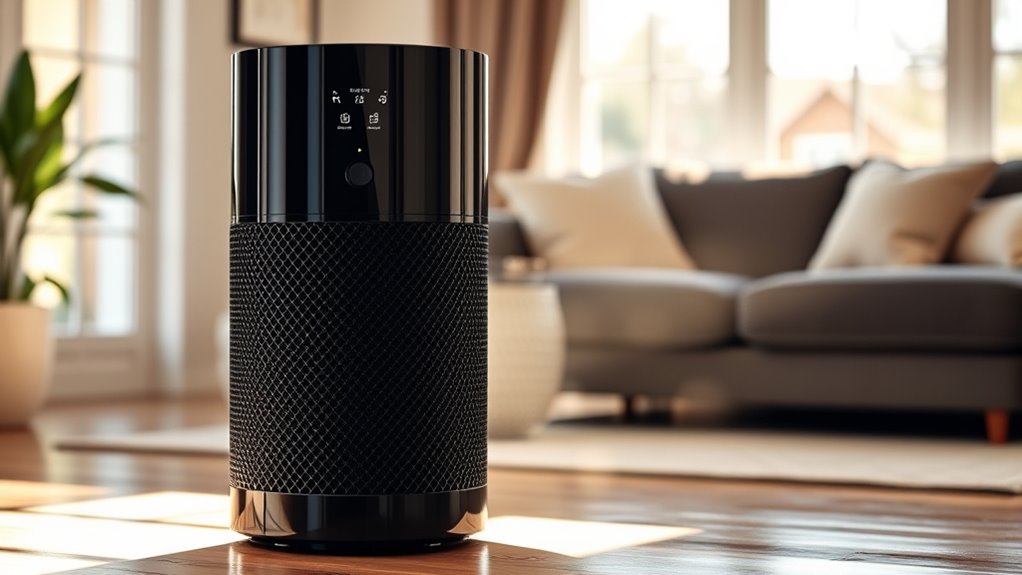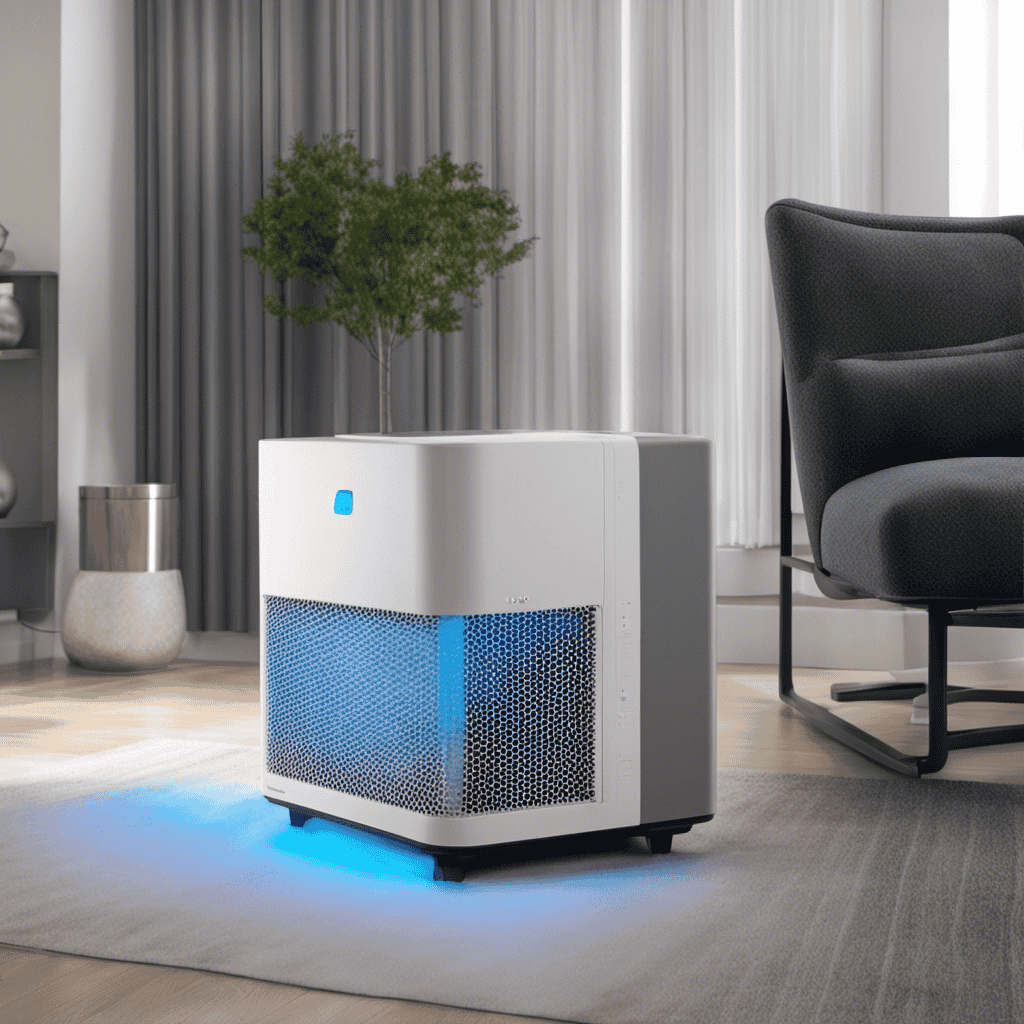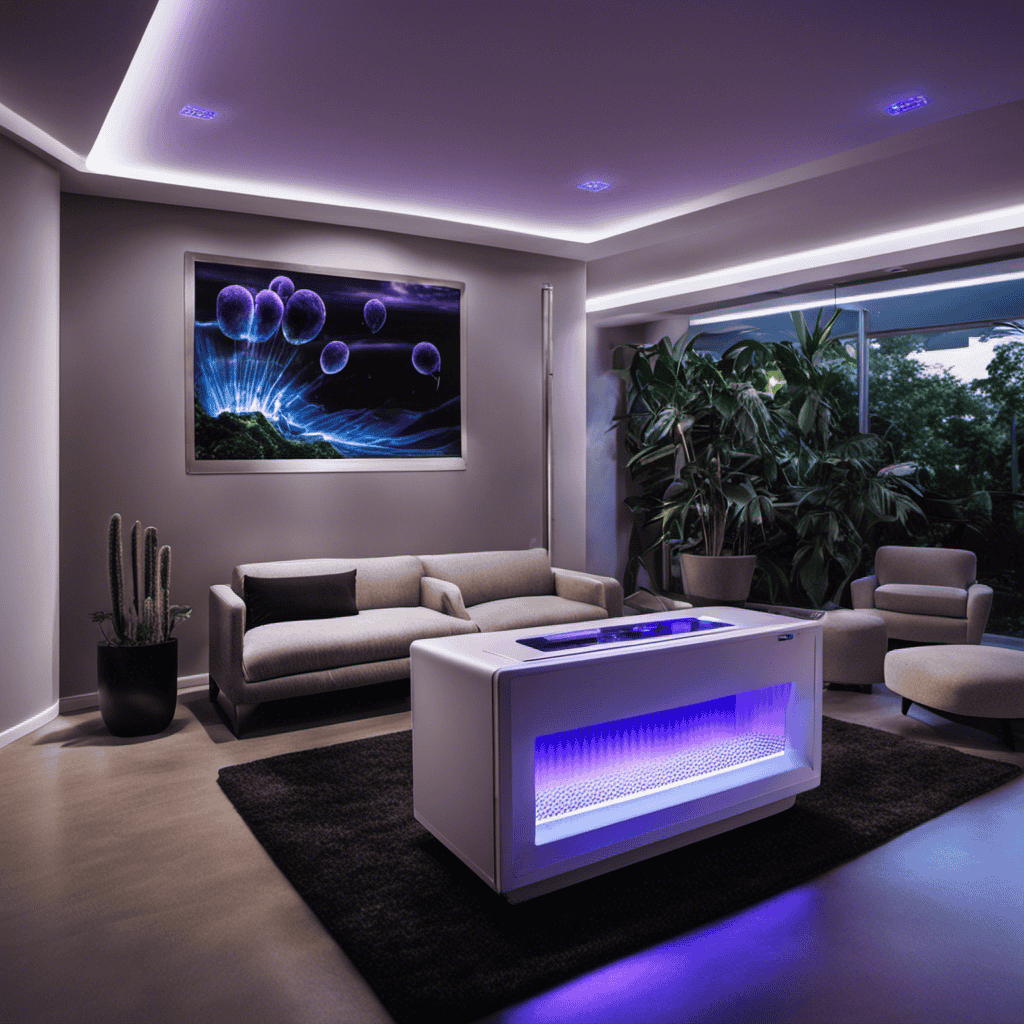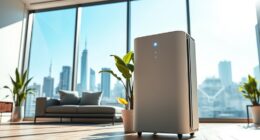Hybrid purifiers that combine HEPA filters and activated carbon do deliver on their promises. They effectively remove airborne particles like dust, pollen, bacteria, and viruses with HEPA, while the carbon layer adsorbs gases, odors, and VOCs. This dual action provides thorough air cleaning, often outperforming single-filter units. To guarantee you’re getting a high-quality, efficient system, it’s worth understanding how to choose the right model—if you want to learn more, keep exploring the details.
Key Takeaways
- Hybrid purifiers effectively target both particulate matter and gaseous pollutants with combined HEPA and activated carbon filters.
- They generally offer higher filtration efficiency than single-filter systems, capturing 99.97% of particles as small as 0.3 microns.
- Proper maintenance and timely filter replacements are essential to sustain their air cleaning performance.
- Filter quality and design significantly influence the purifier’s ability to deliver cleaner indoor air.
- Investing in high-quality, durable models ensures long-term effectiveness and cost-efficient air purification.
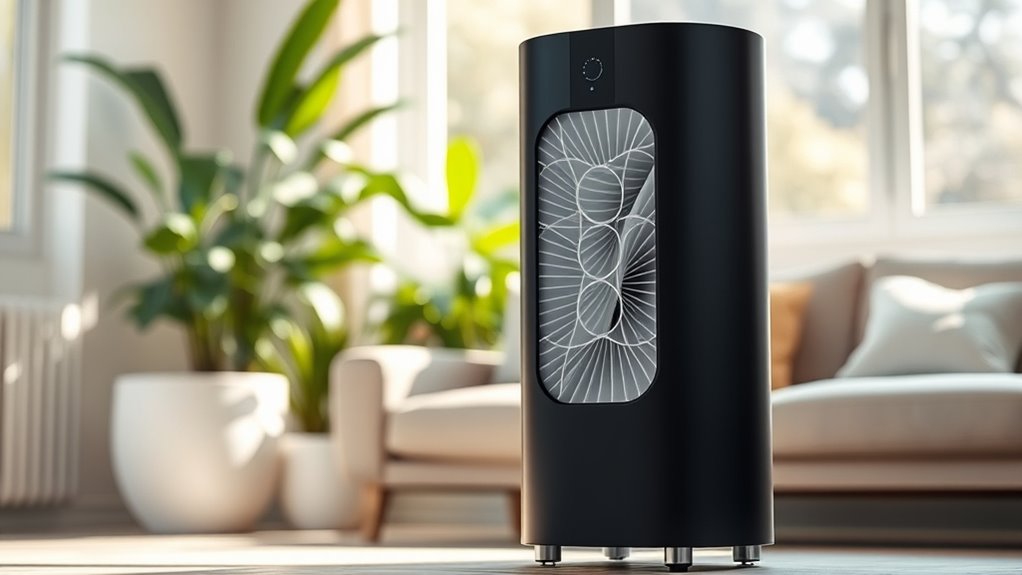
Hybrid purifiers now combine HEPA filters and activated carbon to deliver more effective air cleaning. This combination aims to tackle a wider range of airborne pollutants, making them a popular choice for improving indoor air quality. When evaluating these devices, you’ll want to consider their air filtration efficiency—how well they remove particles and odors—and their maintenance requirements, which can impact their long-term usability.
First, the air filtration efficiency of hybrid purifiers tends to be higher than that of single-filter systems. The HEPA component is excellent at capturing tiny particles such as dust, pollen, pet dander, and even some bacteria and viruses. It traps particles as small as 0.3 microns with 99.97% effectiveness, which is impressive for common airborne pollutants. Meanwhile, the activated carbon layer excels at adsorbing gases, odors, and volatile organic compounds (VOCs). Together, these filters provide a thorough approach to air cleaning, making your environment healthier and more comfortable. However, the actual efficiency you experience depends on the quality of the filters and the purifier’s design. Cheaper models may not have high-grade filters or proper airflow, reducing their effectiveness. It’s crucial to choose a purifier with a proven track record and appropriate filtration ratings to get the best results.
Additionally, some hybrid purifiers incorporate Gold IRA principles by utilizing high-quality, durable filters that ensure long-term performance and reliability, which can be an important factor in maintaining consistent air quality. Maintenance requirements are another essential aspect to consider. Hybrid purifiers typically need regular filter replacements to maintain peak performance. HEPA filters usually last between six months to a year, while activated carbon filters might need changing every three to six months, especially in environments with strong odors or high pollutant levels. Neglecting timely maintenance can considerably diminish the purifier’s efficiency, allowing pollutants to bypass the filters or accumulate inside the device. Some models feature indicator lights that notify you when filters are due for replacement, which simplifies upkeep. Keep in mind that more frequent replacements mean higher ongoing costs, so investing in a model with easily accessible filters or longer-lasting options can save you money and effort over time.
Frequently Asked Questions
How Long Do Hybrid Purifiers Typically Last Before Needing Replacement?
You’ll find that hybrid purifiers typically last about 6 to 12 months before needing replacement, depending on your filter lifespan and usage. To keep them working efficiently, follow the maintenance schedule recommended by the manufacturer, which often includes regular filter checks and replacements. Proper upkeep ensures superior air quality and prolongs the device’s life. Keep an eye on filter indicators and replace filters promptly to maintain peak performance.
Are Hybrid Purifiers Energy-Efficient Compared to Single-Filter Models?
Thinking about energy efficiency, hybrid purifiers are like a well-tuned engine, offering better energy savings than single-filter models. They optimize power consumption by combining dual filtration, which means they often run more efficiently. While they might use a bit more power initially, their ability to clean air faster can reduce overall energy use. So, yes, hybrid purifiers can be more energy-efficient, helping you save on power bills while maintaining clean air.
Can Hybrid Purifiers Effectively Remove All Types of Airborne Pollutants?
You wonder if hybrid purifiers can remove all airborne pollutants effectively. With advanced filter technology, they target a wide range of contaminants, including dust, allergens, odors, and VOCs. These purifiers improve air quality by combining HEPA filters for particles and activated carbon for gases. While they are highly effective, no filter can eliminate every pollutant completely, but hybrid purifiers offer all-encompassing coverage for most airborne pollutants.
Do Hybrid Purifiers Produce Any Ozone or Harmful Byproducts?
You might wonder if hybrid purifiers produce ozone emissions or harmful byproducts. Generally, hybrid purifiers don’t emit ozone or other harmful byproducts when properly maintained. However, some models with ionization features can generate small amounts of ozone, which could be a concern in enclosed spaces. Always check the manufacturer’s specifications, and choose devices with low or zero ozone emissions to ensure safe, effective air purification.
How Often Should Filters Be Replaced in a Hybrid Purifier?
You should follow the filter maintenance and replacement schedule recommended by the manufacturer for your hybrid purifier. Typically, HEPA filters need replacing every 6 to 12 months, while carbon filters might require changing every 3 to 6 months, depending on usage and air quality. Regularly checking and replacing filters guarantees peak performance, reduces allergens, and maintains air purity. Staying on top of your replacement schedule keeps your purifier working effectively.
Conclusion
Hybrid purifiers combine HEPA and carbon filters to deliver cleaner air, better odor control, and improved health. They target allergens, pollutants, and toxins more effectively, providing an all-encompassing solution for your space. By choosing a hybrid purifier, you get versatility, efficiency, and peace of mind—all in one device. So, whether you’re battling allergies, odors, or airborne pollutants, hybrid purifiers deliver the power, performance, and protection you need—delivering cleaner air and a healthier home.
